
Somebody had planted it there — the Scarlet Milkweed. Didn’t give much thought to it. Noticed only when it bloomed with bright yellow-orange flowers, garnished with vividly coloured caterpillars. These were the larvae of the Plain Tiger (Danaus chrysippus), a species of Danainae (“milkweed butterflies”, which lay their eggs on various milkweeds, on which their larvae feed) and a subfamily of the brush-footed butterfly family, Nymphalidae.
Scarlet milkweed (Asclepias curassavica) also known as Bloodflower and Indian Root is native to South America but has spread across many parts of the globe. Its flowers attract many butterflies. The plant’s sap contains toxins, which in turn are transferred to the caterpillars, making them inedible to most predators. The caterpillar of the Plain Tiger sports bright colours that warn predators of its bad taste.
The adult Plain Tiger lays eggs on the undersides of leaves. The eggs hatch after approximately five days and then the larval stage begins with the first instar of the caterpillar. Instars are the stages between moults. The skin of caterpillars, like those of insects, don’t grow as the animal grows. In order to grow in size, the caterpillar moults (sheds old skin exposing the new layer of skin underneath) four times, moving from the first instar to the second, the second to the third, and so on until the fifth and final instar. During these moulting stages the caterpillar grows incredibly in size, as its only function is to be an eating machine.
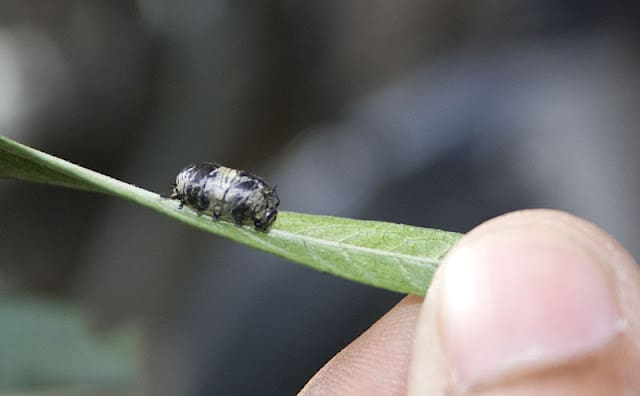
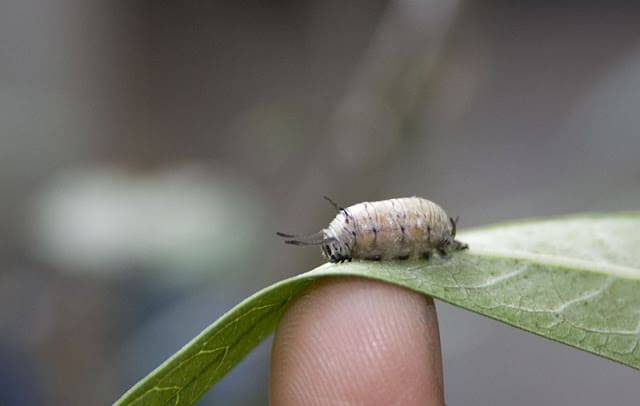
During the fifth and final instar, the caterpillar will look for a suitable spot to pupate (pupa is the third stage in a butterfly’s lifecycle). Once it locates the ideal spot, it hangs inverted, forms the shape of a ‘J’ and moults for the last time. The new skin underneath will form the chrysalis, which is the pupa of a butterfly formed of a hard chitinous shell (chitin is a tough, protective, semitransparent naturally occurring polymer, which forms the principal component of arthropod exoskeletons). The pupa may be green or brown if found in natural surroundings; otherwise it is pink. Although it looks dormant, a lot happens within the pupa. This is the stage where the caterpillar metamorphoses into an adult butterfly.
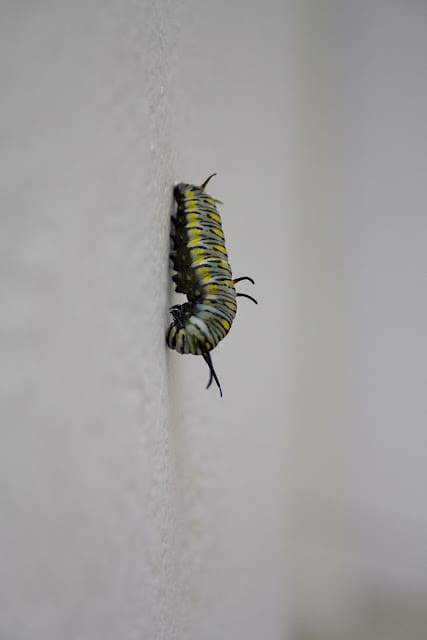 |
| A caterpillar in its final instar getting ready to moult one last time |
After approximately two weeks in the chrysalis stage, the butterfly emerges. Known in this stage as the imago, the sexually mature adult frees itself from the chrysalis and settles nearby to wait for the wings to gain full shape and size. The butterfly’s wings are small and wet when it emerges. Fluids are pumped from its abdomen into the wings so that they expand to their actual size. While this is happening, a brownish liquid may be seen coming out of the butterfly; this is meconium (a waste product from the pupal stage that is expelled through the anal opening of the adult butterfly). The wings then have to dry and become warm before the butterfly can exercise its flight muscles. All of this takes only a couple of hours.
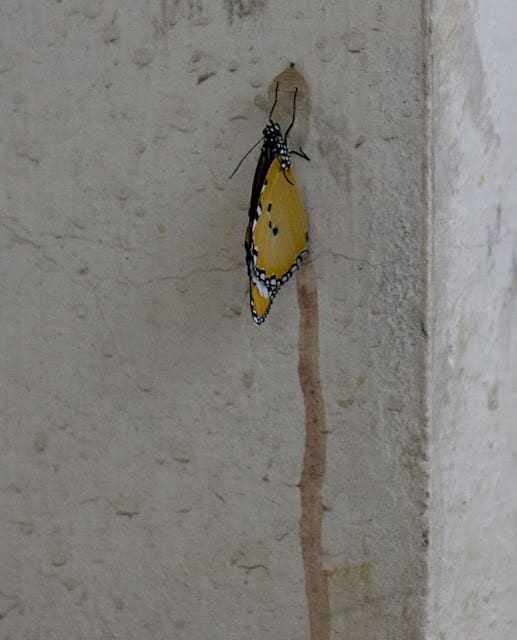 |
| The meconum can be seen flowing down |
Now that the Plain Tiger is in the last stage of life, its sole purpose is to seek a mate and breed. Although the Plain Tiger had put on its best suit, the same could not be said of the Milkweed. All that was left of the plant after the caterpillars had eaten their fill were bare stems stripped of leaves.
But milkweeds are hardy plants, and there is no cause for worry. They will bounce back to their former glory in no time.
Text and photographs by Arun Menon
Latest posts by Arun (see all)
- Savannah Sprinter – A day at the office with the cheetah - April 9, 2020
- Mangalajodi – birds and serenity in a winter wetland - April 14, 2018
- Let the sleeping tiger lie – on meeting the big cat on foot - March 13, 2017

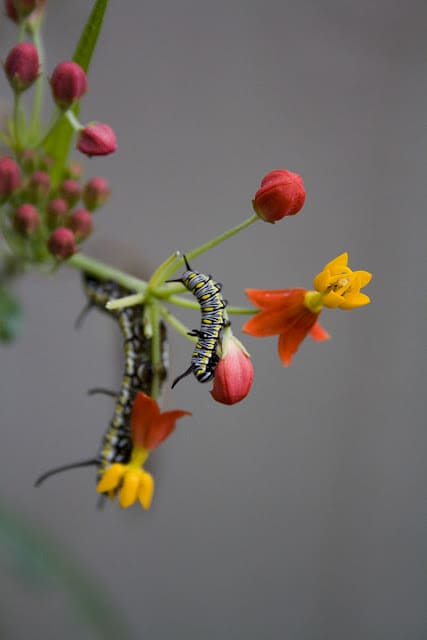
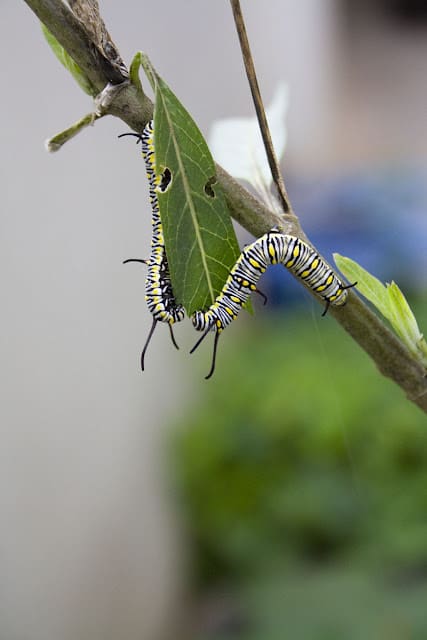
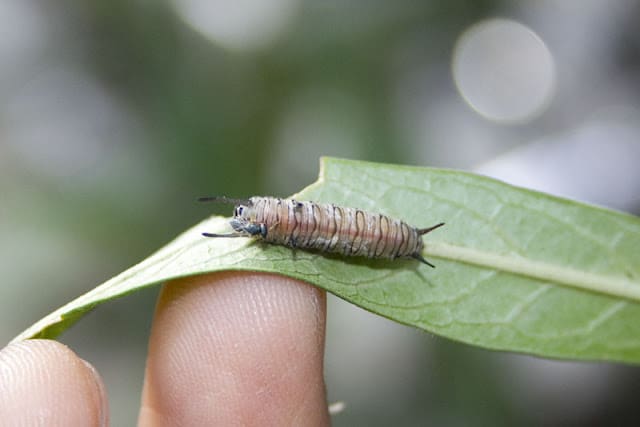
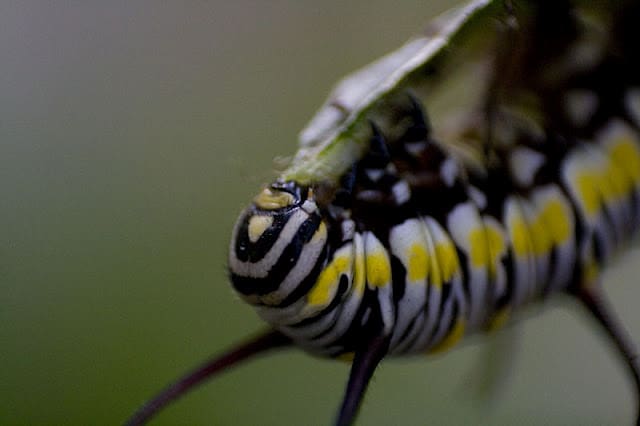
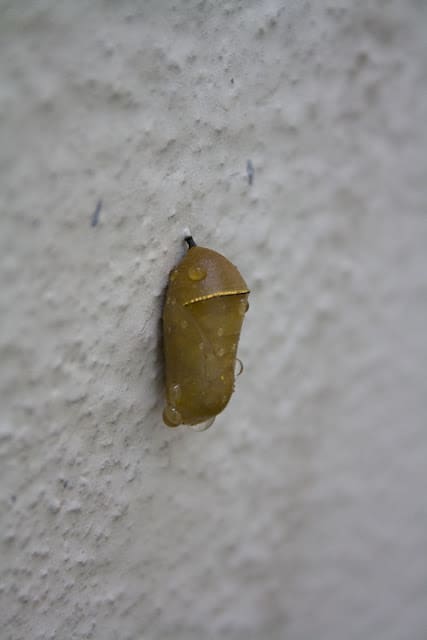
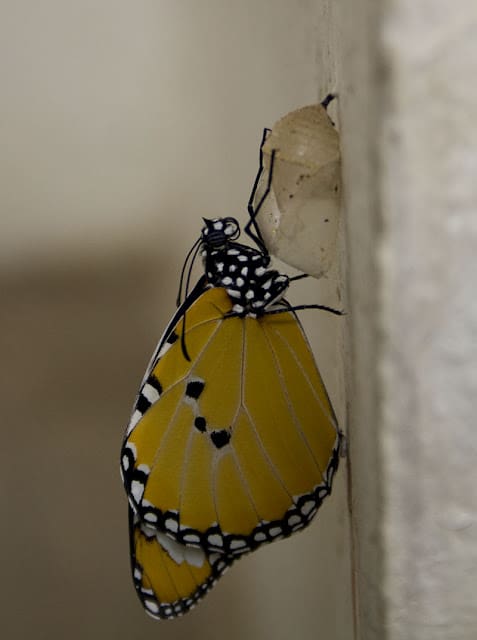
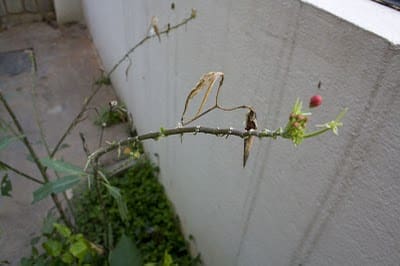
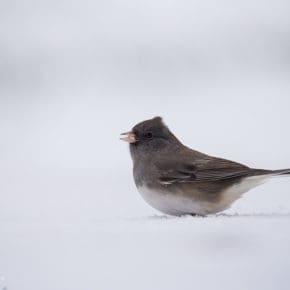
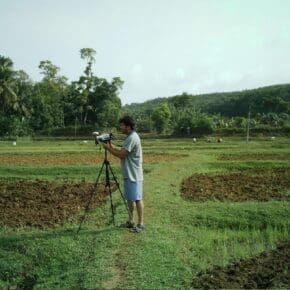
One thought on “Metamorphosis at my doorstep”